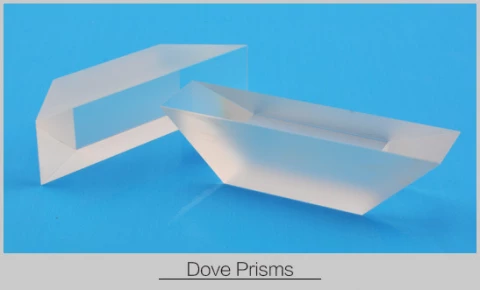FIFO-Dove prism
Description
www.xfphotonics.com
Dove Prism is a form of prism invented by H. W. Dove. It resembles half of a common Right-Angle Prism in which a ray entering parallel to hypotenuse face is reflected internally at that face and emerges parallel to its incident direction. One of the incident rays emerges along a continuation of its incident direction, and if the prism is rotated about that ray through some angle, the image rotates through twice that angle. A Dove prism just can be used for parallel light.
FIFO-Dove prism
Specifications |
|
|---|---|
| Material: | BK7 |
| Dimension (A): | 35 mm |
| Dimension (B): | 15 mm |
| Dimension (h): | 10 mm |
| Mounting: | Unmounted |
| Dimension Tolerance: | ±0.2 mm |
| Clear Aperture: | >85% |
| Surface Figure: | λ/4@632.8 nm |
| Surface Quality: | 60-40 scratch and dig |
For pricing, technical or any other questions please contact the supplier
- No registration required
- No markups, no fees
- Direct contact with supplier
-
Ships from:
United States
-
Sold by:
-
On FindLight:
since 2016
Frequently Asked Questions
A Dove prism resembles half of a common Right-Angle Prism in which a ray entering parallel to hypotenuse face is reflected internally at that face and emerges parallel to its incident direction. One of the incident rays emerges along a continuation of its incident direction, and if the prism is rotated about that ray through some angle, the image rotates through twice that angle.
A ray entering parallel to hypotenuse face is reflected internally at that face and emerges parallel to its incident direction. One of the incident rays emerges along a continuation of its incident direction, and if the prism is rotated about that ray through some angle, the image rotates through twice that angle.
A Dove prism is a form of prism invented by H. W. Dove. It resembles half of a common Right-Angle Prism in which a ray entering parallel to hypotenuse face is reflected internally at that face and emerges parallel to its incident direction.
A Dove prism just can be used for parallel light. This kind prism has another application. The prism is used as a retroreflector. For this application, it performs as a Right-Angle Prism that is used 180°deflection.
No, a Dove prism can only be used for parallel light.
